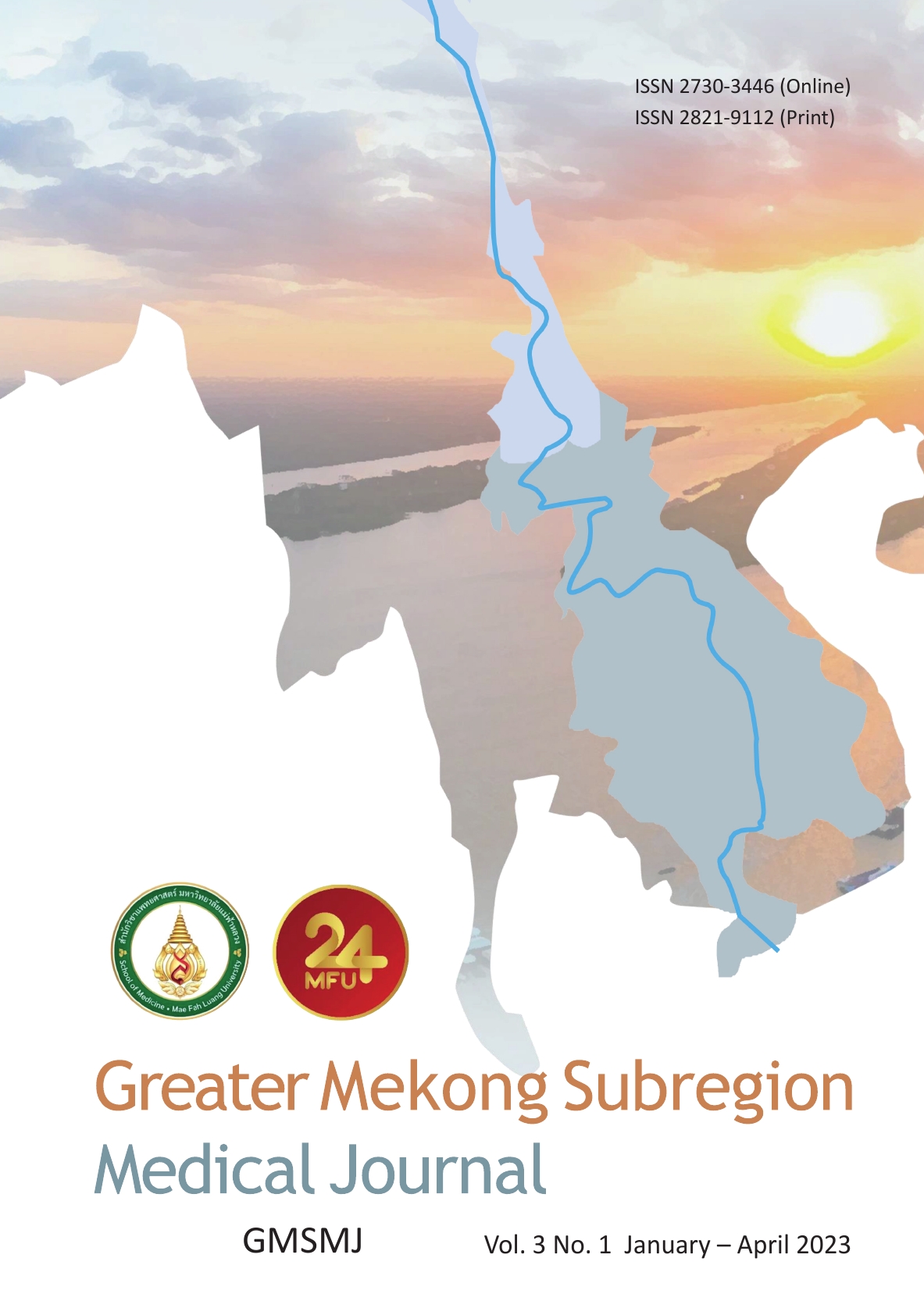Barcode Scanning Technology to Improve Pre-dispensing Errors
Keywords:
Pre-dispensing errors, Medication errorsAbstract
Background: Unsafe medication practices and medication errors are leading causes of avoidable harm in health care systems across the world. Medication errors occur when weak medication systems and/or human factors. World Health Organization (WHO) suggests using computer technology to improve safety at all levels of healthcare. Pre-dispensing errors incident at Mae Fah Luang University Medical Center Hospital was higher than other university hospital that led to dispensing errors.
Objective: To describe handheld computer improving pre-dispensing errors.
Materials and Methods: This research was prospective and quasi-experimental study. This study was divided into 2 phases; the first phase was the development and run-in with handheld computer. The second phase was the effectiveness before and after study using handheld computer for packing.
Results: Handheld computer could reduce pre-dispensing errors caused by handling wrong drug, wrong dosage form and wrong strength of medicines as compared with those using traditional methods significantly (p-value < 0.01). This was a statistically significant reduction of the errors from 41.7% to 26.4% especially in look-alike, sound-alike (LASA) drugs 8.3% to 2.8%. Two errors were found because of the returned medication in the wrong location and pharmacist assistant not using the handheld computer. Median outpatient waiting time was decreased from 11 minute to 9 minute. The satisfaction of users was statistically significant with an increase from moderate to high level of the average scoring (3.2 to 3.8) (p-value = 0.03).
Conclusion: The study showed that barcode scanning technologywith handheld computer could help reduce medication errors, especially LASA drugs. Furthermore, this technology could improve efficacy and patient safety other than the use of barcode scanning system by pharmacist and barcode medication administration (BCMA) by nurse
References
Medication without Harm - Global Patient Safety Challenge on Medication Safety. Geneva: World Health Organization, 2017. License: CC BYNC-SA 3.0 IG
Medication Errors: Technical Series on Safer Primary Care. Geneva: World Health Organization; 2016. License: CC BY-NC-SA 3.0 IGO
Kaushal R, Bates DW. Information technology and medication safety: what is the benefit? Qual Saf Health Care. 2002 Sep;11(3):261-5. https://doi.org/10.1136/qhc.11.3.261 PMid:12486992 PMCid:PMC1743646
Schneider PJ (2018) The Impact of Technology on Safe Medicines Use and Pharmacy Practice in the US. Front. Pharmacol. 9:1361. https://doi.org/10.3389/fphar.2018.01361 PMid:30524289 PMCid:PMC6256183
Alexander A. Leung, Charles R. Denham et al, A Safe Practice Standard for Barcode Technology, J Patient Saf & Volume 11, Number 2, June 2015 https://doi.org/10.1097/PTS.0000000000000049 PMid:24618650
Schneider, P. J., Pedersen, C. A., and Scheckelhoff, D. J. (2018). ASHP national survey of pharmacy practice in hospital settings: dispensing and administration - 2017. Am. J. Health Syst. Pharm. 75, 1203-1226. https://doi.org/10.2146/ajhp180151 PMid:29903709
Kitjaruwannakul S, Kitsirirat K, Teeka B, Kumlueharn K, Doungjitjaroen K, Kitjaruwannakul K. Development of a LASA Safety Shelf (Shelf with Barcode System) for Reducing Predispensing Error Associated with Look-alike/ Sound-alike drugs. Thai Journal of Hospital Pharmacy 2020; 30 (3):185-97.
Downloads
Published
How to Cite
Issue
Section
License
Copyright (c) 2022 Greater Mekong Sub-region Medical Journal

This work is licensed under a Creative Commons Attribution-NonCommercial-NoDerivatives 4.0 International License.






